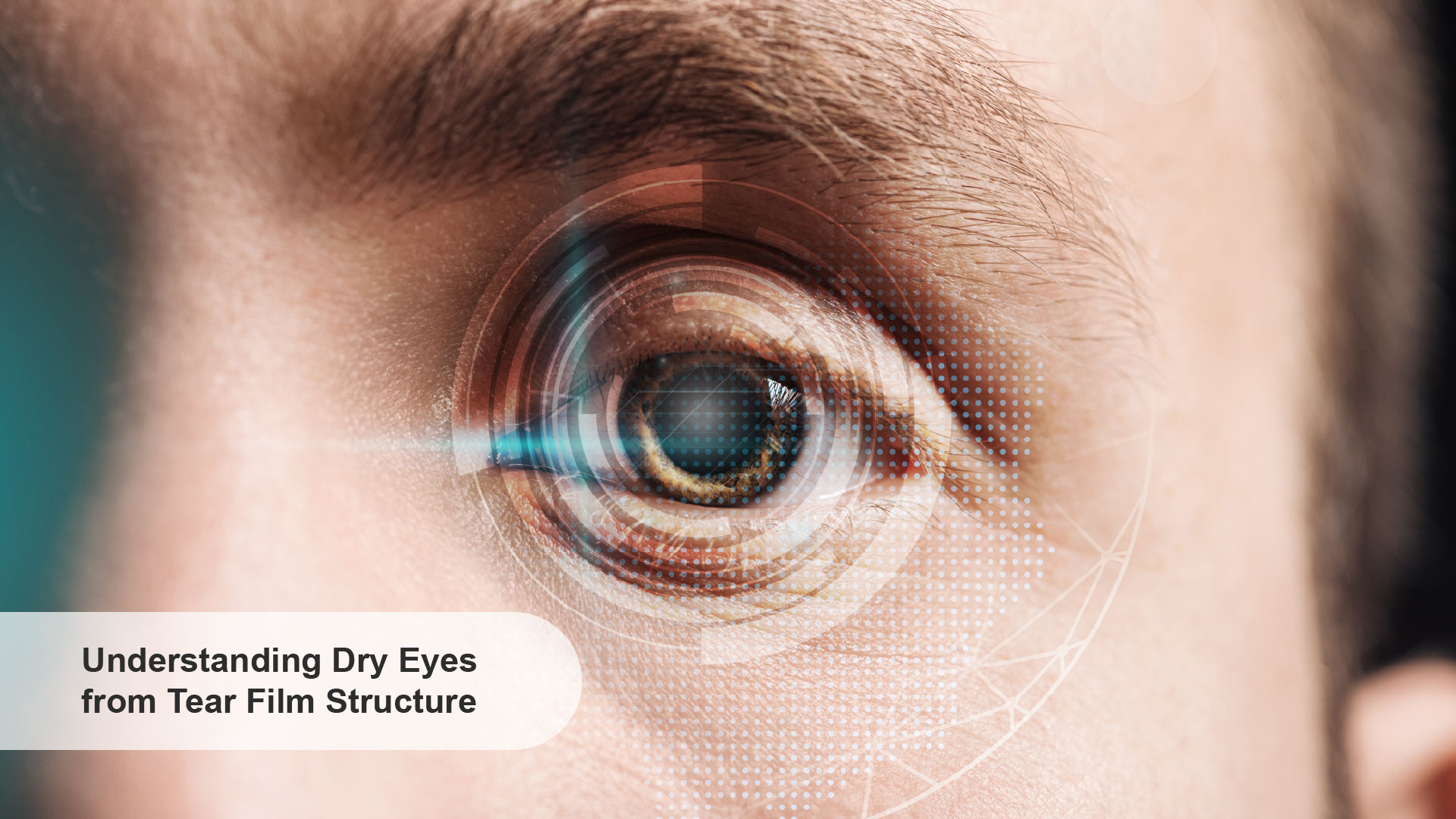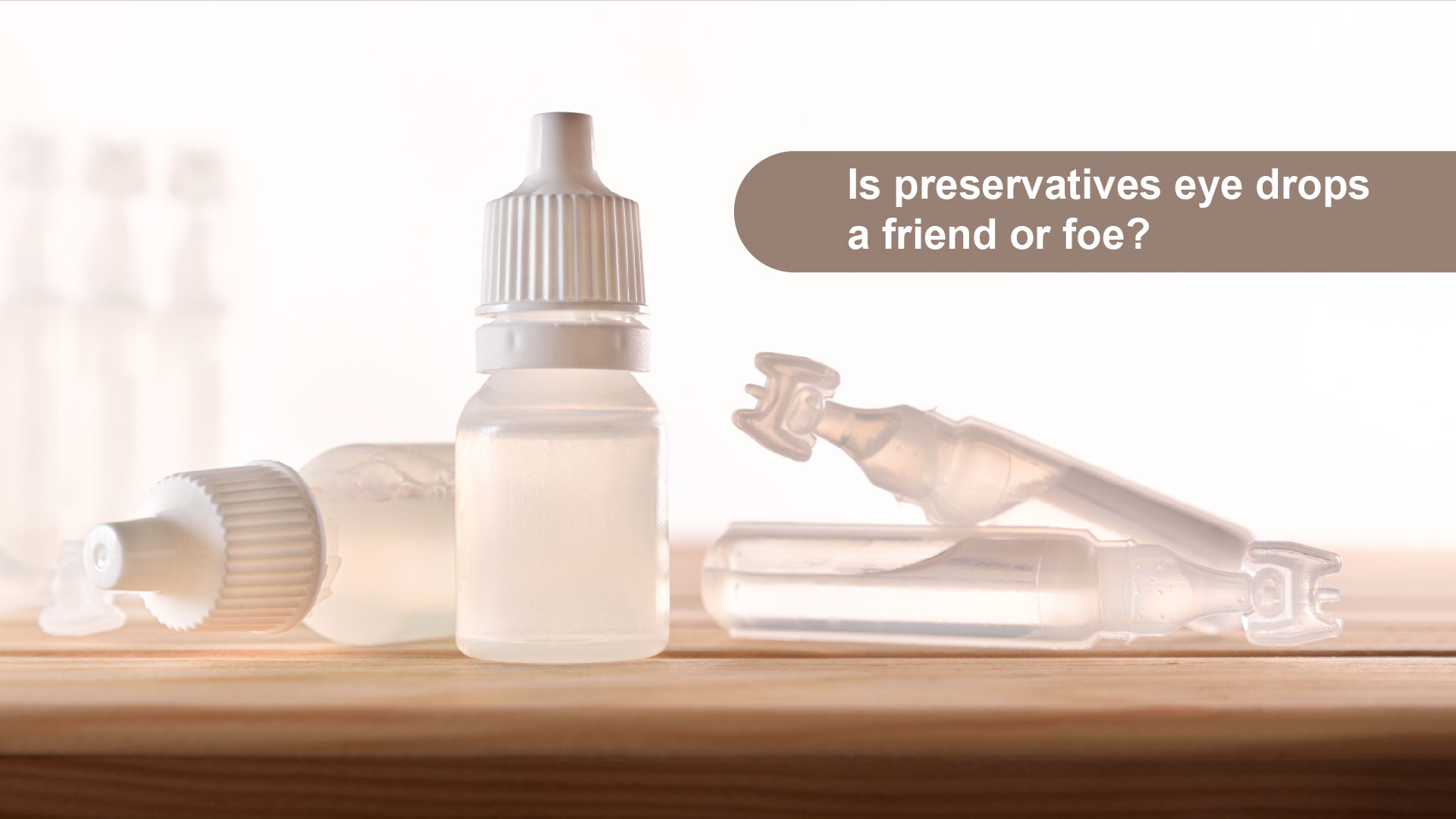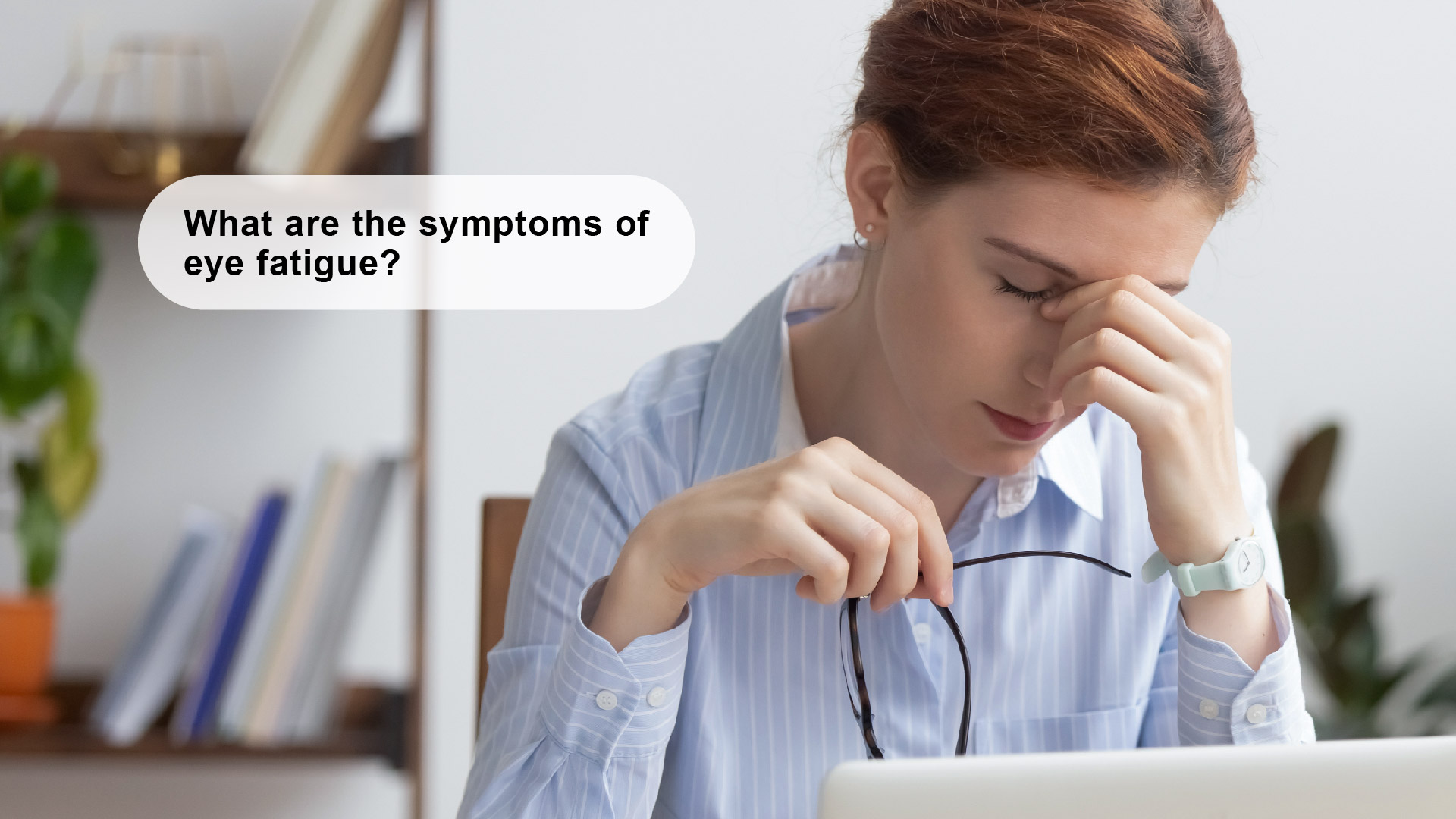Understanding Dry Eyes from Tear Film Structure
Tear Film Structure
The tear film comprises three layers, each with distinct functions:
- Lipid Layer:
The outermost layer of the tear film, composed of oil secreted by the Meibomian glands. The lipid layer’s thickness is approximately 0.1-0.2 μm. With a melting point lower than body temperature, it remains liquid at average body temperature, preventing excessive evaporation of tears and the aqueous layer. Moreover, it prevents water-soluble substances in tears from penetrating the cornea. The three-layer structure of the tear film coordinates to maintain the eyes’ health. - Aqueous Layer:
The middle layer of the tear film, with a thickness of approximately 7 μm, is composed of liquid secreted by the lacrimal, accounting for over 90% of the total tear film volume. The tears contain rich nutrients such as glucose, amino acids, and vitamins, providing nutrition to the cornea and conjunctiva. Additionally, tears contain oxygen, facilitating the respiration of corneal epithelial cells. Tears also contain lysozyme, immunoglobulins, and other antibodies, resisting infection. - Mucin Layer:
The innermost layer of the tear film, with a thickness of approximately 10-20 μm, comprises glycoproteins and lipids secreted by conjunctival goblet cells. The hydrophilicity ensures an even distribution of tears on the corneal surface. Glycoproteins are the main components of the mucin layer, which also contain abundant proteins exhibiting antibacterial and antiviral effects and promoting corneal epithelial cell growth.
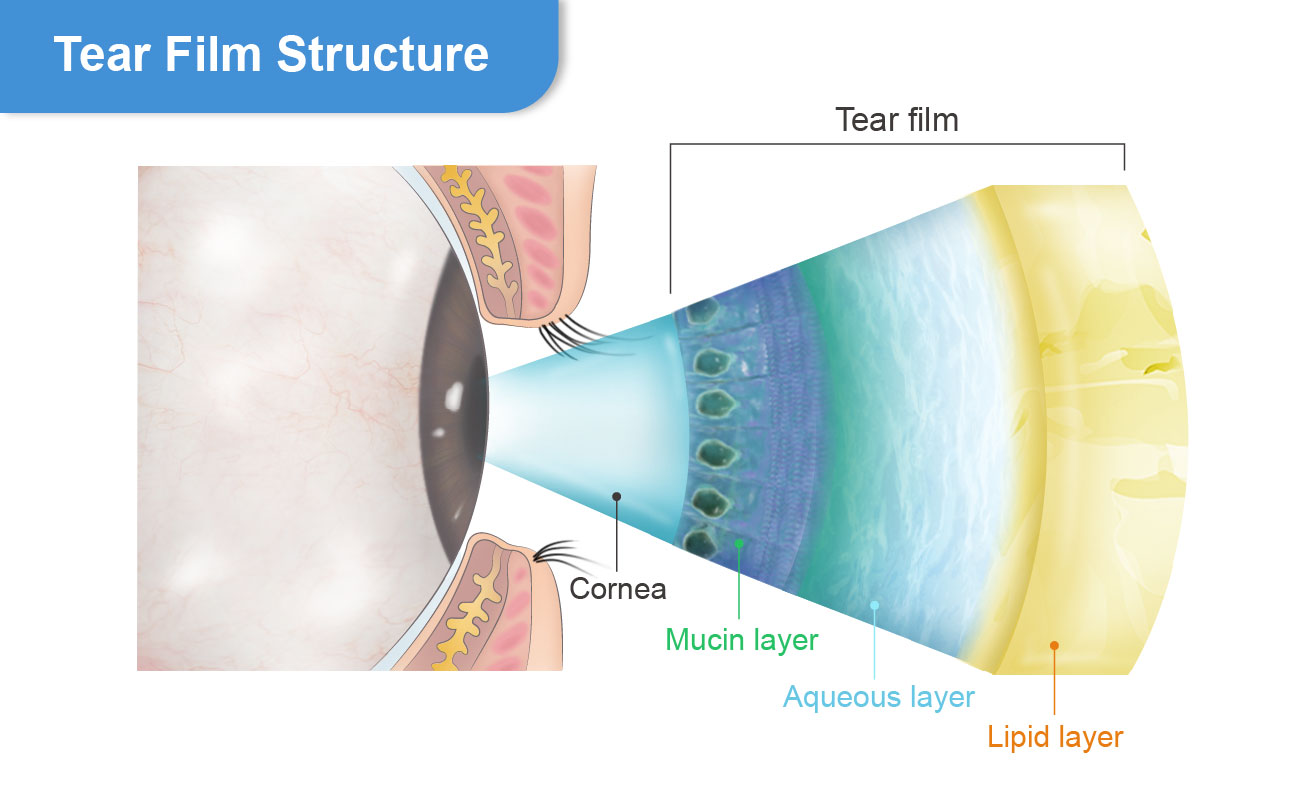
Functions of Tear Film
The tear film’s functions include:
-
Lubricating the surface of the eyeball to reduce friction.
-
Providing nutrients and oxygen to maintain the health of the cornea and conjunctiva.
-
Clearing metabolic waste and foreign bodies.
-
Resisting infection.
-
Keeping the cornea smooth to improve visual quality.
Lubricating the surface of the eyeball to reduce friction.
Providing nutrients and oxygen to maintain the health of the cornea and conjunctiva.
Clearing metabolic waste and foreign bodies.
Resisting infection.
Keeping the cornea smooth to improve visual quality.
Symptoms Associated with Tear Film
Insufficient or excessive tear secretion and abnormal composition can lead to tear film abnormalities, including dry eye syndrome, excessive tearing, and lipid layer abnormalities.
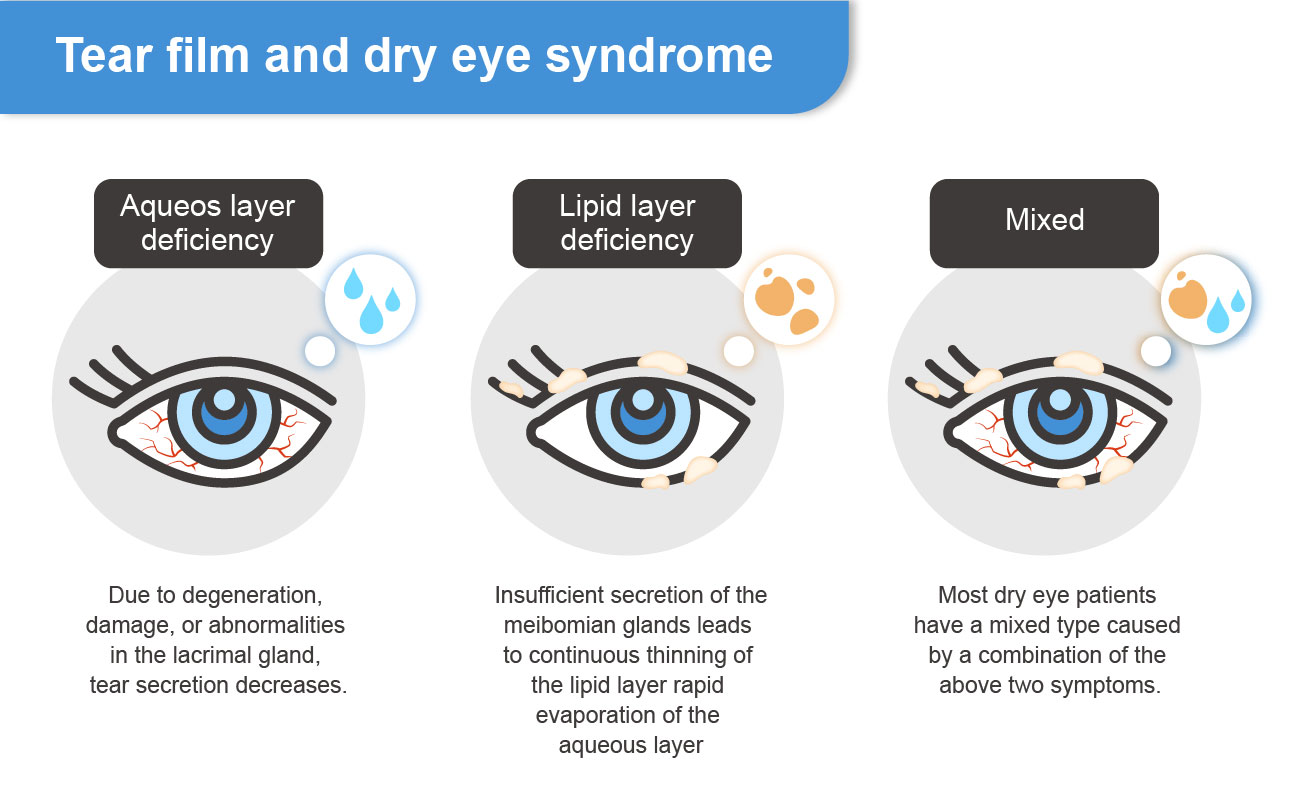
Tear Film and Dry Eye Syndrome
According to research, dry eye syndrome affects approximately 3 out of every 10 people in Hong Kong¹, indicating its increasing prevalence in the region. The number of severe dry eye syndrome patients is also increasing, and long-term neglect of symptoms can lead to vision impairment and corneal diseases.
Several tear film problems may cause dry eye syndrome:
- Aqueous layer deficiency:
Due to degeneration, damage, or abnormalities in the lacrimal gland, tear secretion decreases. - Lipid layer deficiency:
Insufficient secretion of the meibomian glands leads to continuous thinning of the lipid layer rapid evaporation of the aqueous layer, and may be caused by “meibomian gland dysfunction.” - Mixed (Aqueous-deficient & Evaporative dry eye):
Most dry eye patients have a mixed type caused by a combination of the above two symptoms.
Numerous methods are available to relieve dryness of the eyes, including using eye drops, chromotherapy, wearing specialized glasses, and supplementing eye-nourishing nutrients. Natural and preservative-free moisturizing eye drops are the most common way to relieve dry eye symptoms.
Below is a recommendation for Ursapharm HYLO GEL® as a daily moisturizer to alleviate eye fatigue:
- Preservative-free and patented bottle design: Using the COMOD®-System patented technology, the eye drops are kept in a sterile state and sealed environment without the need for preservatives, maintaining the quality of the eye drops.
- Patented Hylo® hyaluronic acid: It is a hydrophilic molecule that can adsorb in water, forming a protective film on the eye’s surface. This helps maintain moisture and hydration and improves the tear film’s stability, helping protect the eyes.
- Drop-by-drop dosage Design: The COMOD® dosage system makes dispensing precisely one drop per pump stroke possible. This means the contents go a long way. The drop dispensed is the same size, producing a constant, reliable effect.

